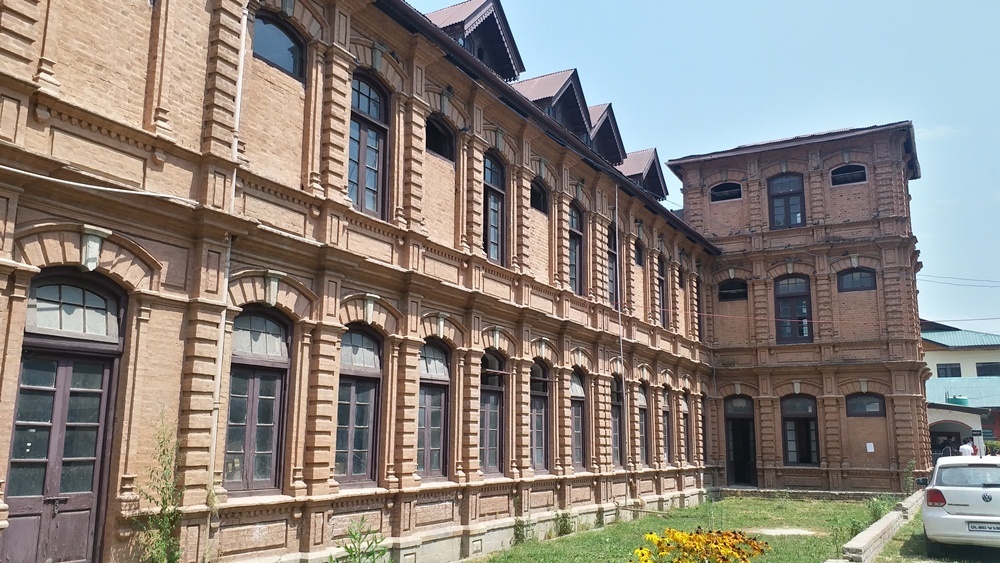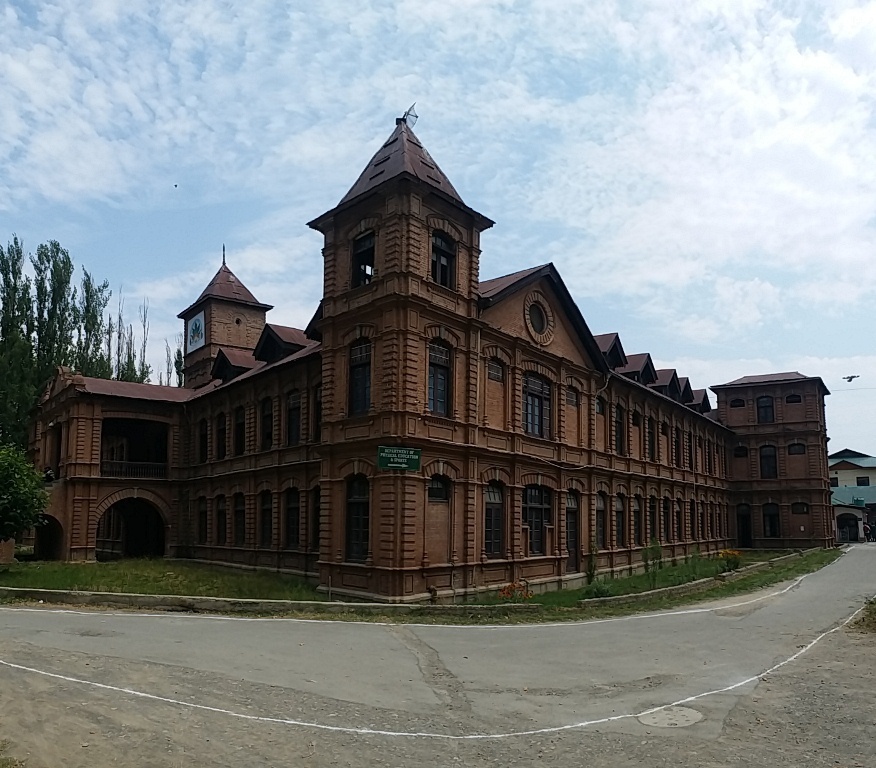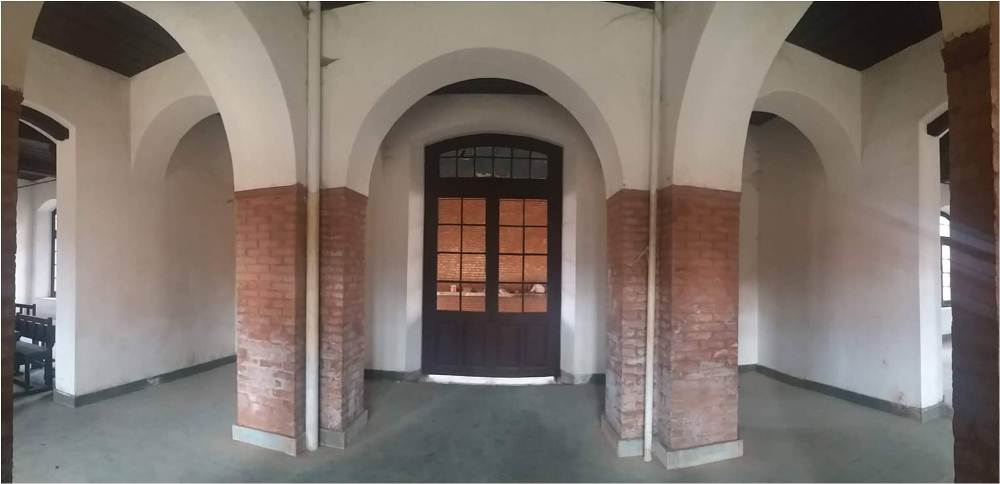
“The restoration of the Amar Singh College brought back one of the most prominent institutional buildings in Kashmir to its former glory.”
AMAR Singh College, Srinagar, has been recognized with the prestigious Award of Merit in the 2020 UNESCO Asia-Pacific Awards for Cultural Heritage Conservation.
In its statement, the UNESCO said the 48 projects that were received collectively represent a significant achievement in the progress of conservation in the Asia-Pacific region.
“Project entries were diverse in scope and typology and were submitted from nine countries across the Asia-Pacific region,” the statement reads.
The jury, consisting of nine international conservation experts, was convened from 20-22 November 2020 to deliberate the project entries.
This year the Jury awarded two Special Recognition for Sustainable Development, one Award of Excellence, one Award of Distinction, three Awards of Merit, and one Award for New Design in Heritage Contexts.
“The restoration of the Amar Singh College brought back one of the most prominent institutional buildings in Kashmir to its former glory,” 2020 UNESCO Asia-Pacific Jury commented.
“Undertaken with a high level of technical proficiency, the project reversed major deterioration resulting from years of inappropriate additions, poor maintenance, and catastrophic events such as the unprecedented flooding in 2014. The project team’s meticulous attention to original building design and materials involved training a new generation of building artisans in brick and stone masonry.”
Competently led by INTACH Kashmir Chapter with support from the local government and a group of community stakeholders, UNESCO observed, the project serves as a noteworthy model for safeguarding a unique 20th century architectural asset in the Victorian neighborhood of the old city of Srinagar.

The Amar Singh College is one of the most important institutional buildings in Kashmir and in essence a built heritage asset that invokes pride in much of the academic and intellectual community of Kashmir as many luminaries are alumnus of this institution.
The Amar Singh Technical Institute was established in 1913, and F. H. Andrews, formerly Headmaster of Battersea Polytechnic School, London was appointed as its first Principal.
The aim was to promote the local industry, to modernise technical education and to teach the pupils new techniques that could support them in their careers.
The college after its initial operational issues went from strength to strength and became a major driver in imparting high-quality education to the Kashmiri society.
Amar Singh Technical Institute was progressively upgraded as Amar Singh College in June 1942 with many additional streams added to its curriculum.

Prior to restoration, the building had suffered extensive damage owing to a series of inappropriate interventions over the years, but essentially after the devastating floods of Kashmir in 2014.
“The objective of conserving the building was to restore the former glory of the building and to repair the damages caused by floods of 2014 and earthquake of 2005 and also those damages that were a result of lack of attention,” said Saleem Beg, Convenor INTACH.
“The highly ornamental building is essentially an exposed brick building, stylistically influenced by the prevailing colonial trend in the region. The ornamental gauged bricks used in the building are handmade ‘rubber’ bricks and therefore very soft and predisposed to erosion and defacement.”
One of the challenges, Beg said, was to train the craftsmen to restore these ornamental bricks and to prepare new bricks to fill-in the missing ones in the walls.
“A sustainability issue to be addressed was the site’s low-lying circumstance which made it vulnerable to water-logging and moisture ingress,” he said. “The building was facing surface erosion, material degradation, vegetative growth and cracks in its towers.”
In the mid-20th century, the site was filled with earth to address the issue of water-logging. The depth of the earth-filling was about 2ft, which led to the plinth, built in ashlars to be completely covered up leading to the plinth becoming ‘un-breathable’. This further led to moisture-trapping within the fabric of the building and causing severe dampness and mold/fungal growth in the classrooms.
Apart from the high-quality architecture, the building also boasts of some wall murals in two of its hallways.
“It appears that these murals, which are influenced by the Ladakhi art, formed a significant part of the building’s interiors but had become obliterated over time,” Beg said.
“Extant samples of these wall murals can be seen in the adjacent rooms to the foyer in the first floor. Much is not known about the origin and context of the wall murals but it is clear that they are from the same period as the building and created intricately using natural pigments. Currently, INTACH, Kashmir Chapter are restoring these wall murals.”

The floods of 2014 rapidly transformed the Wazir Bagh neighbourhood. Large portions of this low-scale suburban 20th century neighbourhood laid out along the patterns of colonial style architecture were extensively damaged, taking a heavy toll on the mostly residential masonry buildings.
“The restoration of the Amar Singh College has contributed to showcasing that traditional builds are far more robust and resilient to disasters than perhaps contemporary builds can ever be,” the convener added.
“It has proved that if restoration is carried out sensitively and prudently, there is never a need to bring a heritage building down just because it has suffered from a calamity.”
The extremely verdant campus, with a great many magnificent Chinars abounding it, the realm of the Amar Singh College contributes as a lung space for all the surrounding neighbourhoods whose residents use its sprawling grounds for dog-walking, playing cricket or just for an evening stroll.
“The restoration work was satisfactorily executed by the conservation team of INTACH Kashmir Chapter lead by Saima Iqbal, conservation architect assisted by Anjum Rafiq, Imran Bhat, experts from IGNCA for the murals,” Beg said.
“The artisans and other workers were sourced by Wasim and Basharat Kathwari. The project was successfully implemented with funding support and cooperation of the College authorities and the Department of Higher Education, J&K Government.”
Follow this link to join our WhatsApp group: Join Now
Be Part of Quality Journalism |
Quality journalism takes a lot of time, money and hard work to produce and despite all the hardships we still do it. Our reporters and editors are working overtime in Kashmir and beyond to cover what you care about, break big stories, and expose injustices that can change lives. Today more people are reading Kashmir Observer than ever, but only a handful are paying while advertising revenues are falling fast. |
| ACT NOW |
| MONTHLY | Rs 100 | |
| YEARLY | Rs 1000 | |
| LIFETIME | Rs 10000 | |










